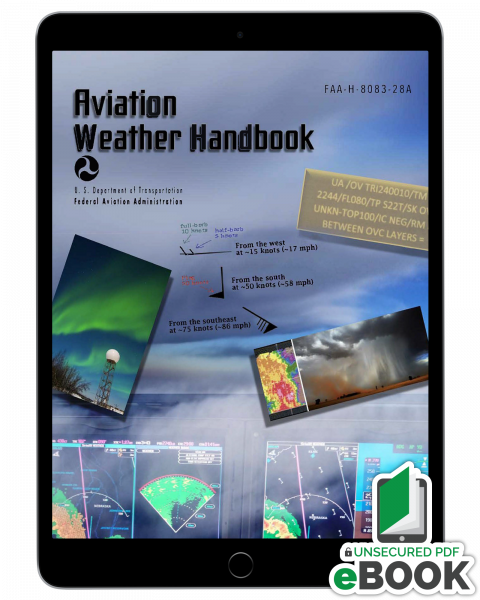
This Federal Aviation Administration (FAA) Handbook updates and consolidates these 6 previous Advisory Circulars:
* AC 00-6, Aviation Weather
* AC 00-24, Thunderstorms
* AC 00-30, Clear Air Turbulence Avoidance
* AC 00-45, Aviation Weather Services
* AC 00-54, Pilot Windshear Guide
* AC 00-57, Hazardous Mountain Winds
Pilots and dispatchers must learn to deal with all aspects of weather, including how to appreciate good weather, recognize and respect marginal or hazardous weather, and avoid violent weather. This knowledge and the ability to make sound weather decisions are critical to the successful outcome of all flights. This book discusses each aspect of weather as it relates to aircraft operation and flight safety and provides information on the tools available for flight planning and inflight weather decisions, including observations, analyses, and forecasts.
The information in this handbook applies to students, experienced pilots, and flight instructors alike and is a key reference for meteorology and weather services pertinent to FAA Knowledge Exams and airman certification. It is a comprehensive resource for what you need to know about weather to fly safely in both visual (VMC) and instrument (IMC) meteorological conditions. Subjects covered include the U.S. aviation weather service program; weather briefings; weather theory and aviation hazards; meteorology; mountain, tropical, arctic, and space weather; observations (ASOS, AWOS, METAR, PIREP, radar); weather charts; advisories (including AIRMET, SIGMET, wind shear); forecasts (TAF, FA); online weather resources and flight planning tools; and much more.
This handbook is broken down into 3 basic parts:
* Part 1: Overview of the United States Aviation Weather Service Program
* Part 2: Weather Theory and Aviation Hazards
* Part 3: Technical Details of Aviation Weather Tools
For the detailed table of contents and other sample pages, please click "Look Inside" above.